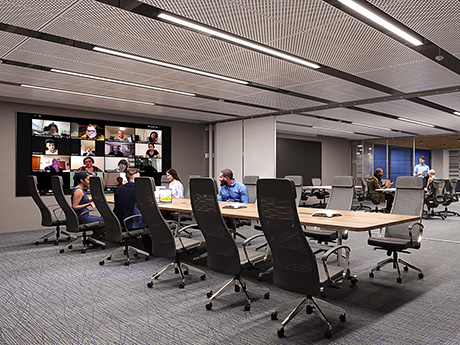The Raleigh-Durham office market is poised for future growth as it exits the pandemic, however the question for us all is when. Re-occupancy of buildings by office users has been stubborn in the current post-pandemic environment.
Despite the sluggish activity since the beginning of the year, there have been bright spots with companies becoming more strategic about their office space decisions as they return, especially in newer projects that offer best-in-class experiences.
Moving forward, there will be economic and geopolitical headwinds that may interfere with the pace of recovery. However, investors and developers continue to the see the value in the market due to our highly educated workforce, favorable business climate and one of the fastest growing population centers in the country.
The return of the workplace is the main driving factor for the activity in the office leasing market. As companies execute their re-occupancy plans, they are reevaluating their existing buildings, footprints and workspaces in a way that we have never seen before. Forward thinking organizations are making decisions to create unique spaces where their employees want to come to work, rather than a space where they have to come to work.
We have quickly seen that one size does not fit all, and corporations are trying to plan for the impact of hybrid work as a long-term program, which will affect their size requirements in the future. Additionally, we are seeing companies place a higher emphasis on digital and technology infrastructure, healthier design and efficient operations of their facilities.
Currently, 2.2 million square feet of new product is under construction, driving up rental rates to an average full-service rate of $31.35 per square foot with newly delivered (or soon to be delivered) office product fetching close to $46 per square foot. Much of this new inventory is driven by company demands for Class A, highly amenitized space in well-located business districts.
As many employees are still hesitant to come back to the workplace, employers are looking for ways to incentivize their workforce by creating experiences that draw employees into the office. Employers are focusing on premier features in their workplaces like onsite food and beverage, concierge services, indoor air quality, building apps, flexible office configuration, technology and sustainability.
Developers are working to add a portfolio of onsite amenities to their new buildings, while existing landlords are searching for ways to upgrade the common areas and offerings they already have in place. The main areas of focus include outdoor seating areas, wellness options, tenant lounge areas and shared conference centers with the latest virtual conference capabilities.
The life sciences industry is a key economic driver in the market, attributing to a major portion of the activity and movement in the office sector. Raleigh-Durham continuously ranks among the top five life sciences markets in the nation. The region is No. 1 in the National Institutes of Health (NIH) funding per capita and No. 4 in venture capital funding growth among major life science hubs. Since 2018, there has been over $6.4 billion invested in the market by life sciences companies, some of which include Fujifilm Diosynth Biotechnologies, Seqirus and Amgen.
With the life sciences activity spiking during the pandemic, investment in life sciences real estate has exploded in Raleigh-Durham with over 8 million square feet in the pipeline for development or conversion. There has been a trend over the last 12 months of converting existing flex, office, shopping malls and big-box retail product into lab space to capture this explosive growth.
Although office leasing activity has seen a slow start since the beginning of the year, Raleigh-Durham has the fundamental elements to continue to entice new companies to enter the market and to encourage existing businesses to expand organically in a post-pandemic environment.
The region holds a diverse amount of talent making it a magnet for technology, life sciences and healthcare companies. These industries will attract and retain top quality talent in the region, creating a multiplier effect that will create even more new jobs in other industries.
This will help fuel more corporate relocations and expansions in Raleigh-Durham, generating significant demand in the office market for years to come. The question is not if we are coming back to the office, it’s just a matter of when.
This article was originally published in the June 2022 issue of Southeast Real Estate Business.




